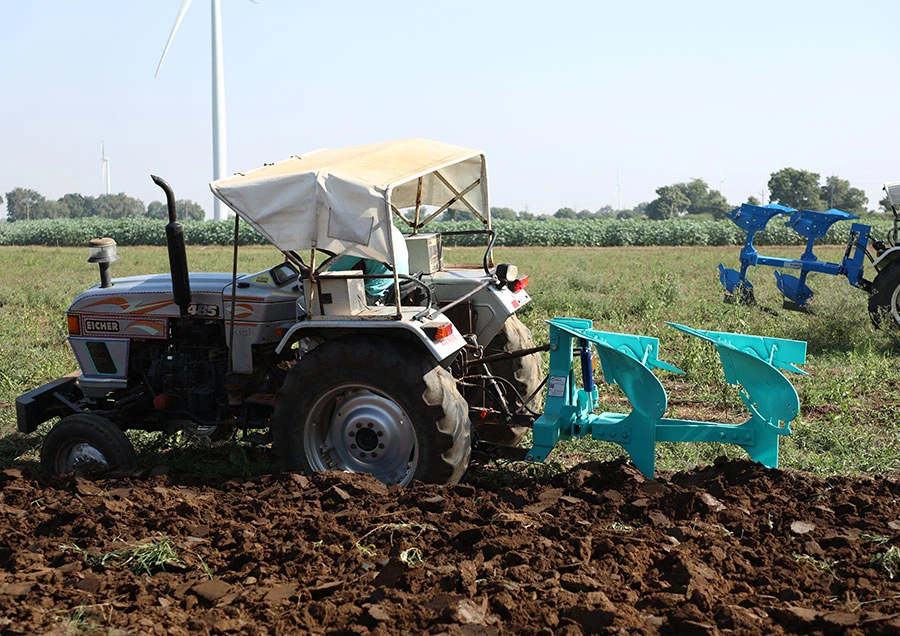Chat With Us
+91 99253 37969Exploring Different Types Of Ploughs in Agriculture

Ploughs are the most effective tools that are used during soil and seedbed preparation in agriculture. Understanding ploughs and their functionality is the utmost job of a farmer and it can affect productivity and yields.
But there are several types of ploughs and each one has unique functionality and mechanism. Through this blog, we will understand and learn about different types of ploughs and analyse their benefits.
Types Of Ploughs With Its Benefits and Limitations
1. Mouldboard Plough
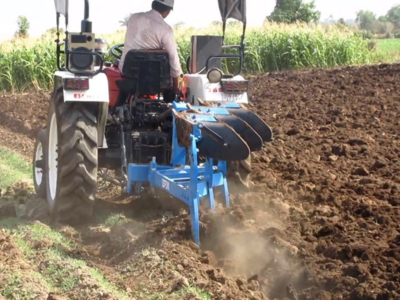
The Mouldboard plough is one of the oldest and most conventional ploughs used for primary tillage activity in farms. It consists of a signature curved blade known as the mouldboard that turns over the soil during tillage.
Key Components:
- Mouldboard: The curved plate that turns the soil.
- Share: The cutting edge that slices through the soil.
- Frog: The base part that supports the mouldboard and share.
- Landside: The flat part that absorbs the side pressure the turning soil exerts.
Benefits:
- Creates a well-aerated soil structure.
- Helps in controlling pests and diseases by burying surface residues.
- Suitable for a variety of soil types, including clay and loam.
Limitations:
- Leads to reduced soil aeration.
- Requires significant power and fuel.
- Increases soil erosion on slopes.
2. Disc Plough
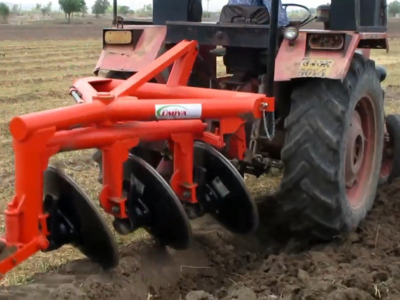
Disc plough is an excellent machinery used in modern-day agriculture that perfectly caters to different soil conditions. It has angled concave blades that help to grind and turn the surface over. Disc ploughs are highly effective during secondary tillage activities.
Key Components:
- Discs: Concave metal discs that cut and turn the soil.
- Standards: The vertical supports holding the discs.
- Frame: The main structure that holds all the Key Components together.
Benefits:
- Less draft requirement compared to mouldboard ploughs.
- Better at handling hard and dry soil conditions.
- Effective in cutting through plant residues and root systems.
Limitations:
- Leaves crop residues on top.
- Less inversion than mouldboard plough.
- Requires high-power tractors to operate.
3. Chisel Plough:
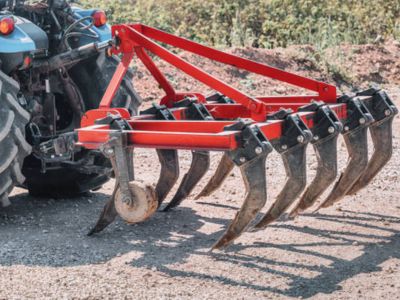
Chisel plough is a unique agricultural implement that includes several narrow and tapered shanks. The shanks move vertically to penetrate the soil and help in inversion. Chisel plough is very effective for stony and marshy soil conditions.
Key Components:
- Shanks: Narrow, pointed metal bars that penetrate the soil.
- Frame: The main structure that holds the shanks in place.
- Depth control wheels: Help to maintain consistent ploughing depth.
Benefits:
- Minimizes soil erosion by not turning over the soil.
- Preserves soil moisture and structure.
- Improves soil aeration and root penetration.
Limitations:
- Less productive in comparison to mouldboard and disc plough.
- Complex in use.
- Provide minimal weed control.
4. Subsoiler Plough
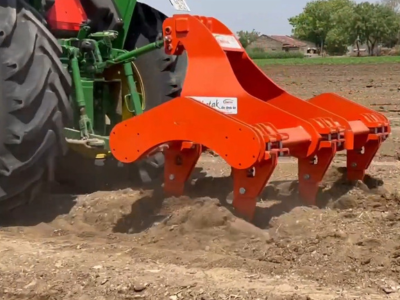
Subsoilers are designed for extensive deep tillage activities. This kind of plough is extremely beneficial in mountain and rocky areas. A subsoiler plough can go as deep as 60 cm in a single penetration.
Key Components:
- Shanks: Deep-penetrating metal bars.
- Frame: The structure that holds the shanks.
- Gauge wheels: Help to control the depth of penetration.
Benefits:
- Enhances soil drainage and aeration.
- Reduces soil compaction, promoting healthier root systems.
- Suitable for preparing soil for deep-rooted crops.
Limitations:
- High risk of soil erosion in sloped areas.
- It costs high energy.
- Application is limited to some kinds of soils.
5. Rotary Plough
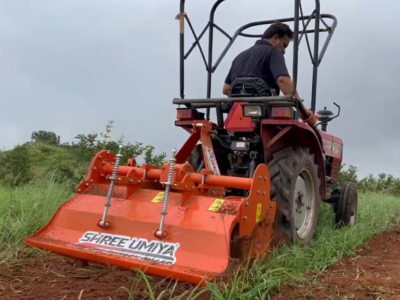
Rotary ploughs commonly known as rotavators are conventional ploughing machines used during primary tillage activity. It consists of rotating blades that churn and pulverize the soil. Rotary Plough is effective for seasonal crops and marshy soils.
Key Components:
- Rotary blades/tines: The rotating parts that pulverize the soil.
- Rotor shaft: The shaft that holds the blades/tines.
- Gearbox: Transfers power from the tractor to the rotary blades.
Benefits:
- Creates a fine, well-prepared seedbed.
- Mixes crop residues and organic matter evenly into the soil.
- Suitable for small-scale and intensive farming operations.
Limitations:
- Limited weed control.
- Less beneficial during secondary tillage activities.
- Not productive when it comes to large-scale farming.
6. Ridging Plough
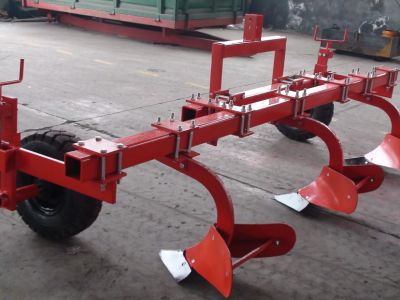
Ridging plough is an effective tool for creating ridges and furrows for seedbed preparation in soil. However, after the arrival of the hydraulic reversible ploughs, ridge ploughs are very rarely used by farms. But no doubt it is an excellent tool for field preparation.
Key Components:
- Mouldboards: Specially shaped to create ridges.
- Frame: Holds the mouldboards in place.
- Gauge wheels: Control the depth and width of the ridges.
Benefits:
- Enhances drainage and prevents waterlogging.
- Improves soil aeration and root development.
- Facilitates easier irrigation and weed control in row crops.
Limitations:
- Forms raised planting rows.
- Increases erosion by controlling runoff.
- Only Ideal for tubers and root crops.
7. Hydraulic Reversible Plough
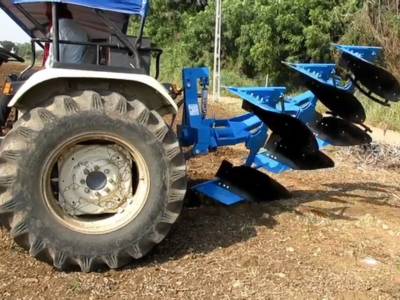
Hydraulic reversible ploughs are dominating the current agricultural landscape. They are way more productive and efficient in comparison to conventional ploughs.
Key Components:
- Reversible mouldboard: This can be flipped to work in both directions.
- Hydraulic system: Allows the mouldboard to be reversed easily.
- Frame: Supports the mouldboard and hydraulic system.
Benefits:
- Increases efficiency by reducing the need for headland turns.
- Provides a uniform tillage depth and soil structure.
- Suitable for various soil types and conditions.
Limitations:
- Requires specialized knowledge for repairs.
- Expensive to purchase and maintain.
Final Thoughts
Ploughs have come a long way from their simple beginnings, evolving into sophisticated tools designed to meet the diverse needs of modern agriculture.
Understanding the different types of ploughs and their specific uses allows you to choose the right equipment according to soil conditions and crop requirements.
You May Also Like:





